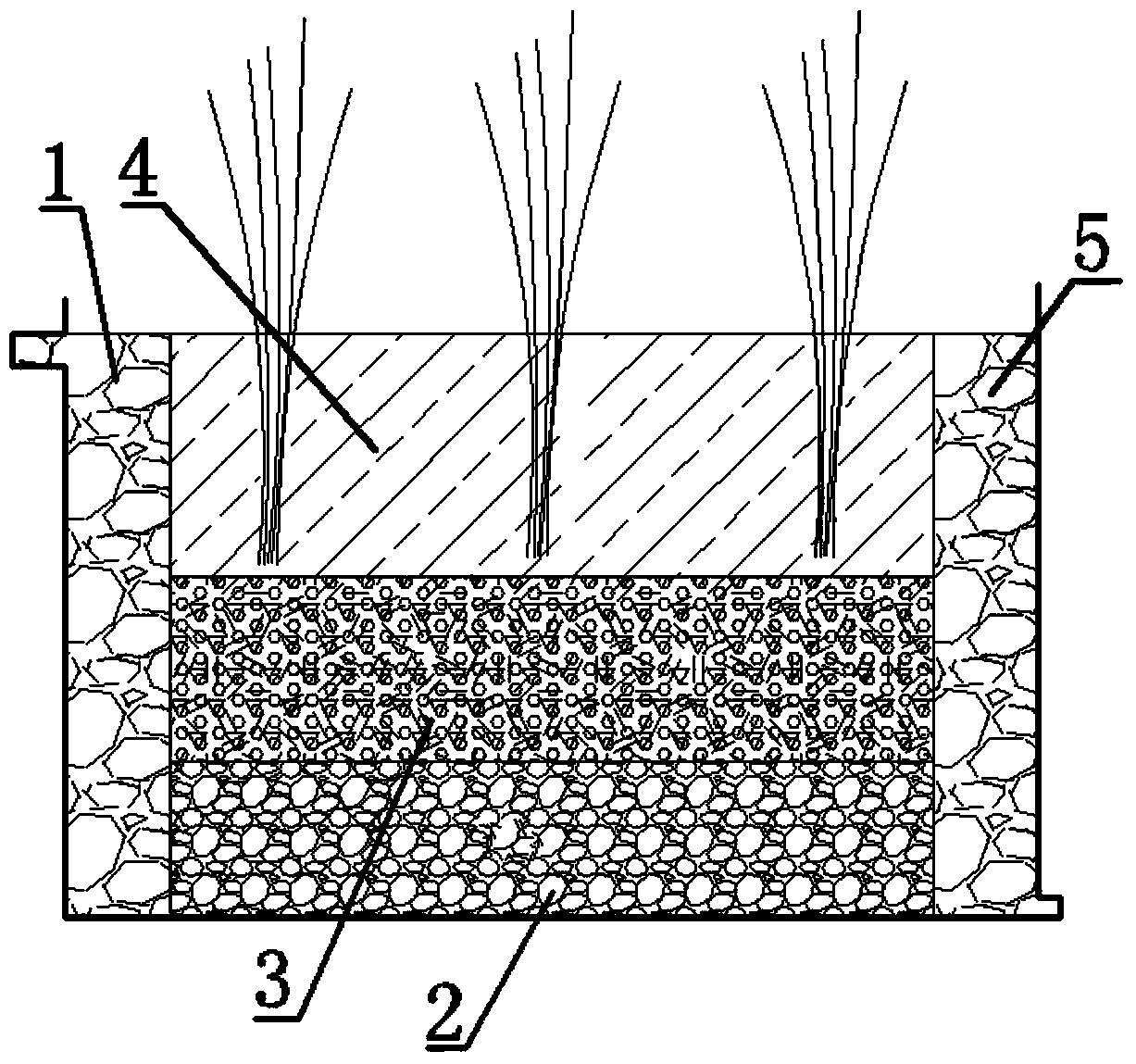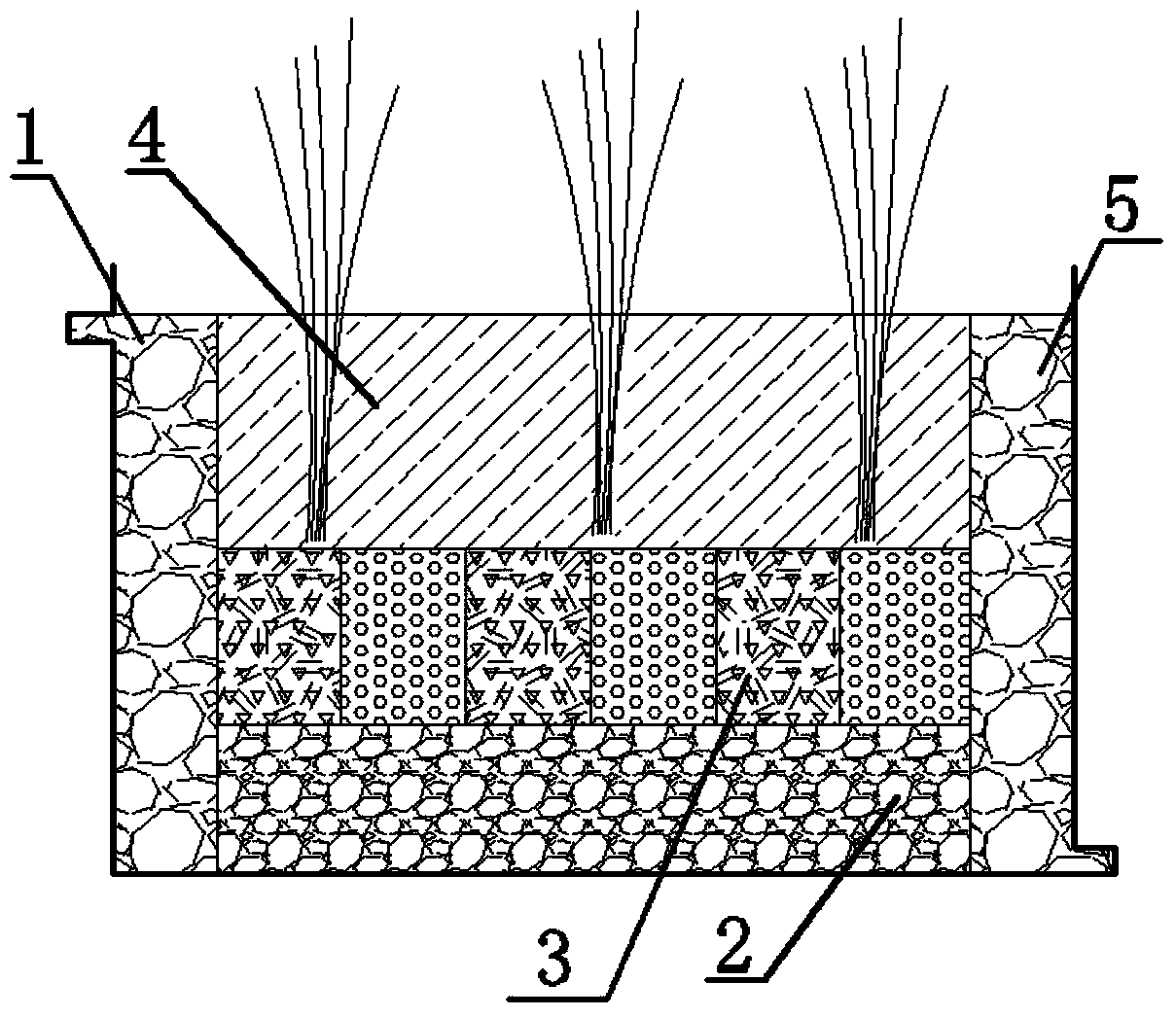Denitrified sewage treatment device and treatment method for artificial wetland
A technology of sewage treatment device and constructed wetland, applied in biological water/sewage treatment, water/sludge/sewage treatment, anaerobic digestion treatment, etc., can solve the problems of high cost of carbon source addition, high cost of addition, fluctuation, etc. , to meet the effluent quality requirements, solve the problem of ineffective control, and achieve the effect of reasonable resource utilization
- Summary
- Abstract
- Description
- Claims
- Application Information
AI Technical Summary
Problems solved by technology
Method used
Image
Examples
Embodiment 1
[0032] Such as figure 1 As shown, a constructed wetland denitrification sewage treatment device includes a sewage treatment pool, and the sewage treatment pool includes a denitrification layer 3 and a soil layer 4; the soil layer 4 is located above or below the denitrification layer 3; the sewage treatment pool The length is ≥1m, and the aspect ratio is ≥3; the two ends of the sewage treatment tank are respectively provided with a water inlet and a water outlet; plants are planted on the soil layer 4; the denitrification layer 3 is composed of sulfur particles, plant stem and leaf fragments and gravel composition.
Embodiment 2
[0034] Such as figure 1 As shown, the difference from Example 1 is:
[0035] Wherein the soil layer 4 is located above the denitrification layer 3; the sewage treatment tank also includes a lower filler layer 2, and the lower filler layer 2 is located below the denitrification layer; the water inlet is located at the front end of the sewage treatment tank The upper part, the water outlet is located at the lower part of the end of the sewage treatment pool, the front end of the sewage treatment pool is provided with a water distribution area 1, and the end is provided with a water collection area 5; the water distribution area 1 and the water collection area 5 are both Accounting for 1 / 15 to 1 / 10 of the total length of the sewage treatment pool, the water distribution area 1 and the water collection area 5 are both filled with crushed stones with a particle size of 20 to 30 mm; the height of the lower packing layer 2 is The height of the denitrification layer 3 is 20-30cm, an...
Embodiment 3
[0038] Such as figure 2 As shown, the difference between this embodiment and embodiment 2 is that
[0039] The plant carbon source heterotrophic-sulfur autotrophic denitrification filler layer is made of 1-2cm plant stem and leaf fragments and gravel with a particle size of 3-5mm, and then mixed with sulfur particles with a particle size of 3-5mm along the push flow direction It is filled alternately at equal intervals, and the interval is 10 cm; the mixing of the 1-2 cm plant stem and leaf fragments and the gravel with a particle size of 3-5 mm is uniformly mixed according to the volume ratio of 1:1-4:1.
PUM
| Property | Measurement | Unit |
|---|---|---|
| height | aaaaa | aaaaa |
| particle diameter | aaaaa | aaaaa |
| height | aaaaa | aaaaa |
Abstract
Description
Claims
Application Information
 Login to View More
Login to View More - R&D
- Intellectual Property
- Life Sciences
- Materials
- Tech Scout
- Unparalleled Data Quality
- Higher Quality Content
- 60% Fewer Hallucinations
Browse by: Latest US Patents, China's latest patents, Technical Efficacy Thesaurus, Application Domain, Technology Topic, Popular Technical Reports.
© 2025 PatSnap. All rights reserved.Legal|Privacy policy|Modern Slavery Act Transparency Statement|Sitemap|About US| Contact US: help@patsnap.com



